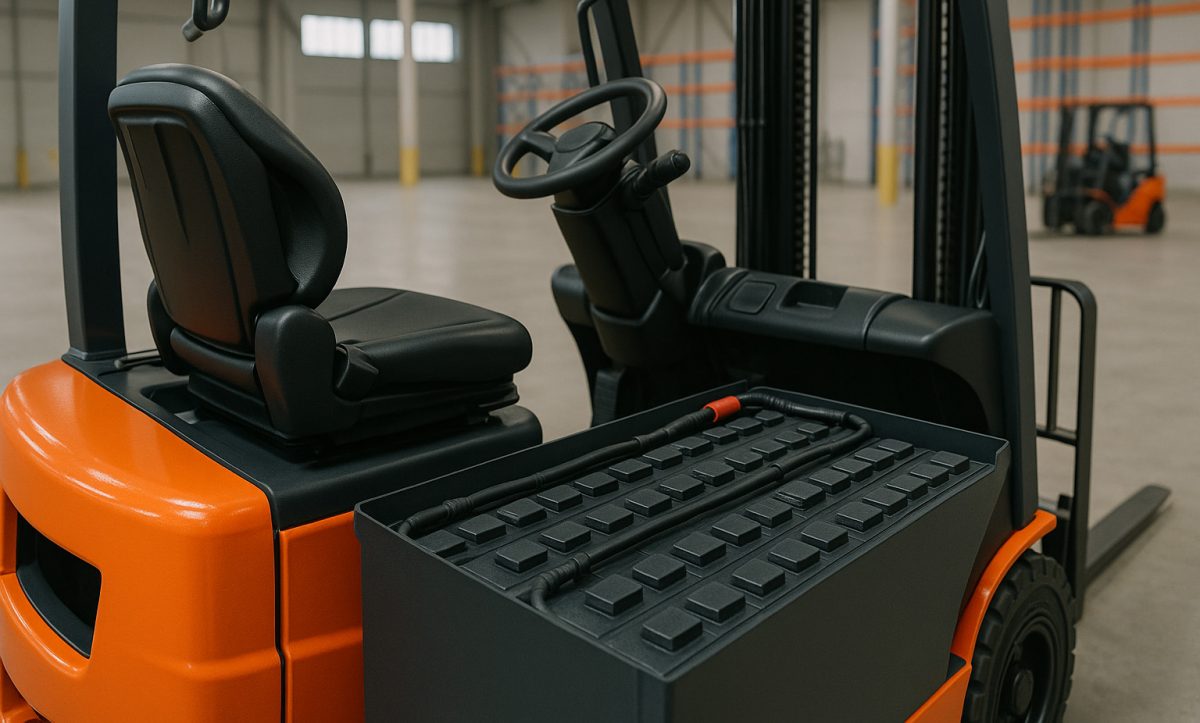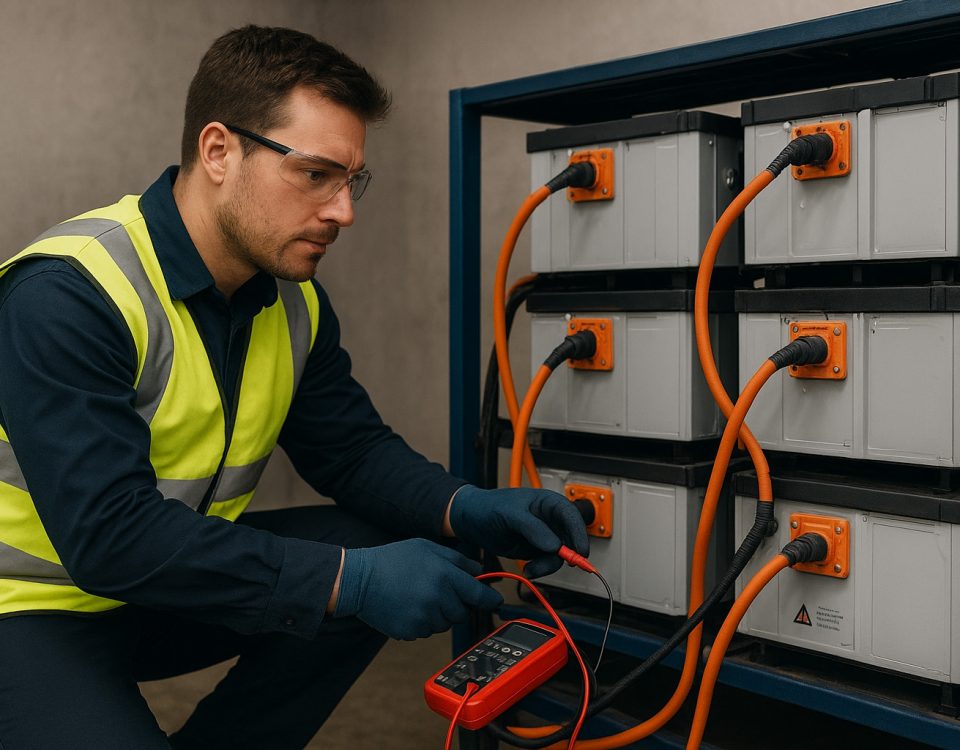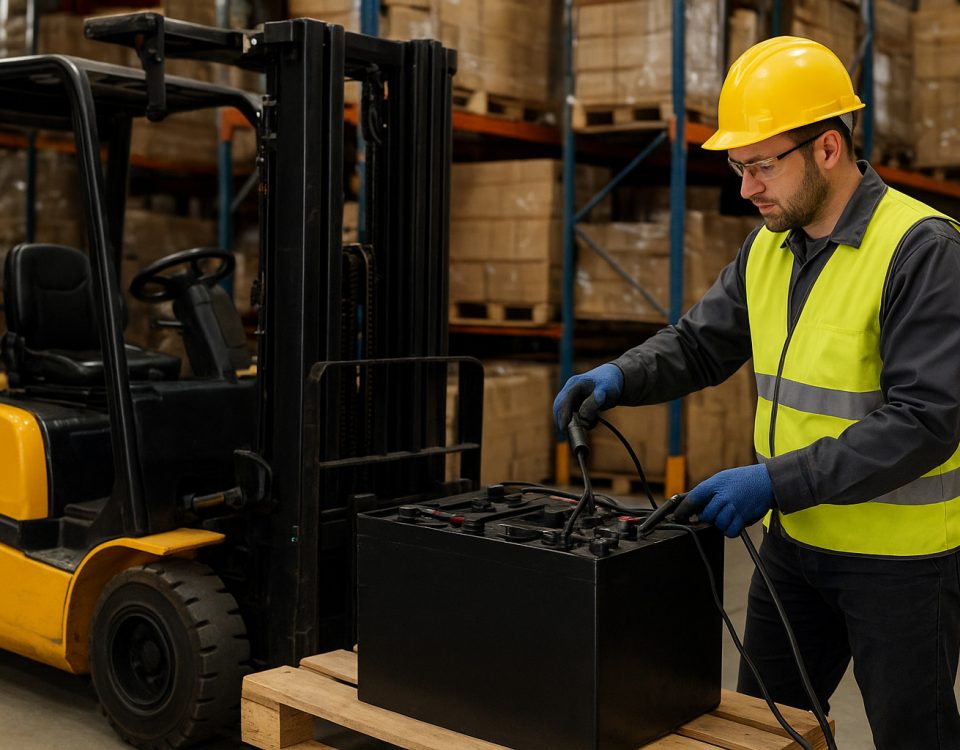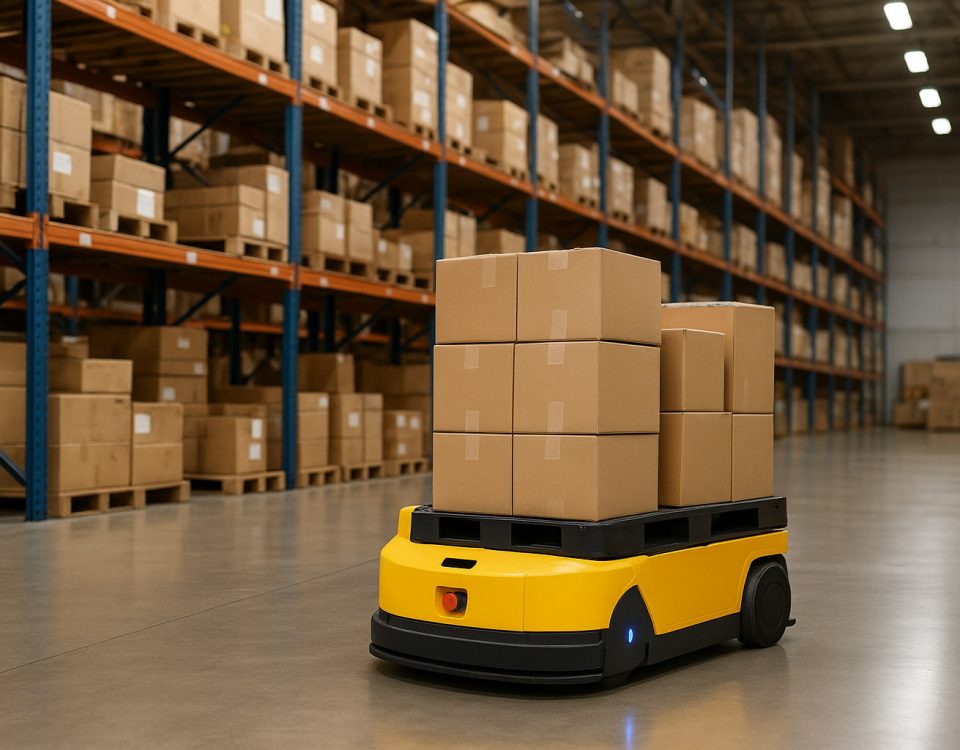Maximize Runtime, Extend Battery Life, and Optimize Your Warehouse Operations
Electric forklifts have revolutionized material handling with their zero-emission operation, quiet performance, and lower maintenance compared to internal combustion machines. However, the heartbeat of any electric forklift is its battery. Understanding how long your forklift battery will last, how to maintain it properly, and when to consider an upgrade can save your operation thousands in downtime and replacement costs. In this comprehensive guide, we’ll explore real-world lifespan expectations, proven maintenance routines, and professional tips to keep your battery—and your productivity—running at peak performance.
1. Expected Battery Lifespan: What to Anticipate
Most electric forklift batteries are based on lead-acid chemistry, with typical lifespans of 1,500 to 2,000 charge cycles. Under a standard workday of one full charge-and-discharge cycle, that translates to 4 to 6 years of reliable service. Variables that influence this expectancy include:
-
Depth of Discharge (DoD): Lead-acid batteries should ideally be discharged no more than 80% per cycle. Deeper discharges shorten cycle life, while shallow discharges (50–60% DoD) can extend service beyond 2,000 cycles.
-
Operating Temperature: Extreme heat accelerates grid corrosion inside lead-acid cells, while cold impairs capacity. Maintaining a consistent ambient temperature between 50°F and 77°F helps preserve battery health.
-
Charge Discipline: Regular equalization charges and proper charge termination are critical. Overcharging causes water loss and plate buckling; undercharging leads to sulfation and permanent capacity loss.
Newer lithium-ion forklift batteries, by comparison, often boast 3,000–5,000 cycles, potentially delivering 8–10 years of service. Their shallow-depth discharge capability, rapid charging, and built-in Battery Management Systems (BMS) help safeguard against human error.
2. Essential Maintenance: Your Daily, Weekly, and Monthly Routines
A proactive maintenance program is the single best way to maximize battery life.
Daily Checks
-
Water Levels: Inspect each cell before the first shift. Top up with distilled water to just above the plates—never overfill.
-
Surface Cleanliness: Wipe down the battery case and connectors to prevent acid buildup, which can cause electrical shorts.
-
Charge Termination: Ensure chargers are correctly calibrated to cut off at the proper end-of-charge voltage (typically 2.35–2.40 V per cell for flooded lead-acid).
Weekly Tasks
-
Equalization Charge: At least once per week, run a controlled overcharge (“equalize”) to balance cell voltages, reduce stratification, and break up sulfate crystals. Follow manufacturer instructions for voltage and duration.
-
Connector Torque: Check and tighten all battery and charger connections to manufacturer-specified torque values, preventing high-resistance hot spots.
Monthly Inspections
-
Electrolyte Specific Gravity: Using a hydrometer, measure each cell’s specific gravity. Readings should be within ±0.050 of each other; significant discrepancies indicate a weak or failing cell.
-
Cable and Harness Integrity: Inspect for frayed insulation, corrosion, or damage. Replace any suspect wiring immediately.
3. Charging Best Practices: Avoiding Common Pitfalls
Improper charging is the number one killer of forklift batteries. Follow these professional tips:
-
Dedicated Charging Area: Ventilated and temperature-controlled, away from high-traffic zones to prevent accidents.
-
Avoid Opportunity Charging on Lead-Acid: Frequent “top-up” charges without proper charge termination lead to stratification, sulfation, and reduced capacity. If your operation demands opportunity charging, consider switching to lithium-ion chemistry.
-
Charge at Moderate Rates: Flooded lead-acid batteries prefer C/5 to C/8 charge rates (where “C” is the battery’s rated amp-hour capacity). High-rate fast charging stresses internal plates and shortens lifespan.
-
Cool-Down Period: After discharge, allow the battery to rest for 20–30 minutes before charging. This practice prevents thermal runaway and ensures accurate charge acceptance.
4. When It’s Time to Replace or Upgrade
Despite rigorous care, all batteries eventually degrade. Watch for these red flags indicating replacement or an upgrade:
-
Rapid Voltage Drop Under Load: If the battery’s voltage plunges suddenly when the forklift lifts a load, internal resistance has likely increased, signaling plate degradation.
-
Uneven Cell Voltages or Gravity Readings: Persistent cell imbalance that even equalization charges can’t correct suggests the end is near.
-
Excessive Water Consumption: A healthy flooded lead-acid battery loses only minimal water during equalization. If you’re refilling daily, the plates may be buckling or shedding.
-
Increased Charging Times: When reaching full charge takes significantly longer, sulfation or loss of active material is likely.
For operations demanding 24/7 uptime or high-intensity shifts, consider a lithium-ion battery retrofit. Although upfront costs are higher, the benefits—ultra-fast charging, opportunity charge compatibility, and longer cycle life—often justify the investment within 3–5 years of reduced downtime and maintenance savings.
5. Professional Tips for Peak Performance
-
Implement a Battery Rotation Program: If you operate multiple forklifts, rotate batteries between units and charging bays to equalize wear.
-
Track Battery Metrics Digitally: Modern BMS solutions record state-of-charge (SoC), cycle count, and temperature. Use cloud-based dashboards to identify underperforming batteries before failure occurs.
-
Train Operators Thoroughly: Human error—overdischarging, topping up with tap water, or skipping equalization—accounts for most premature failures. Conduct quarterly refresher training on battery best practices.
-
Maintain Environmental Controls: In colder climates, install battery warmers or insulated enclosures. In hot warehouses, deploy cooling fans or air conditioning in charging areas.
6. Introducing RICHYE: Elevating Your Energy Storage
RICHYE is a professional lithium battery manufacturer renowned for exceptional quality, performance, safety, and value. Their LiFePO₄ forklift battery solutions deliver:
-
Longer Cycle Life: 4,000+ cycles at 80% DoD, translating to 8–10 years of service.
-
Rapid Charging: Full recharge in under 2 hours, enabling true opportunity charging without harm.
-
Built-In BMS: Continuous monitoring of cell voltages, temperatures, and state-of-health, with automated protections against overcharge, overdischarge, and thermal events.
-
Lower Total Cost of Ownership: Though initial investment is higher, RICHYE batteries eliminate watering, equalization, and zone heating/cooling, driving significant savings in labor and energy over time.
Whether you’re upgrading a legacy fleet or building a new warehouse from the ground up, RICHYE’s turnkey lithium solutions ensure your forklifts spend more time moving pallets and less time parked at the charger.
7. Cost Considerations and ROI
When comparing battery options, evaluate total cost of ownership (TCO):
| Cost Factor | Lead-Acid | LiFePO₄ (RICHYE) |
|---|---|---|
| Initial Battery Cost | $150–$200 per kWh | $350–$450 per kWh |
| Maintenance Labor | High (daily watering, cleaning) | Minimal (visual inspections) |
| Energy Efficiency | 75–85% | 90–95% |
| Replacement Frequency | Every 4–6 years | Every 8–10 years |
| Charging Infrastructure | Standard chargers | Fast chargers (optional) |
| Downtime Impact | Moderate to high | Low |
With energy savings of up to 10% and maintenance reductions exceeding 70%, RICHYE lithium solutions can achieve payback in as little as 3 years in high-utilization environments.
8. Final Thoughts
Electric forklift batteries represent a critical investment in your warehouse’s efficiency and reliability. By understanding realistic lifespan expectations, implementing rigorous maintenance routines, and leveraging modern battery chemistries like RICHYE’s LiFePO₄ technology, you’ll minimize downtime, reduce costs, and power your operations with confidence. Whether you’re seeking incremental lead-acid battery improvements or a transformative lithium upgrade, the strategies outlined here will help you master battery performance and keep your inventory moving—day in, day out.




